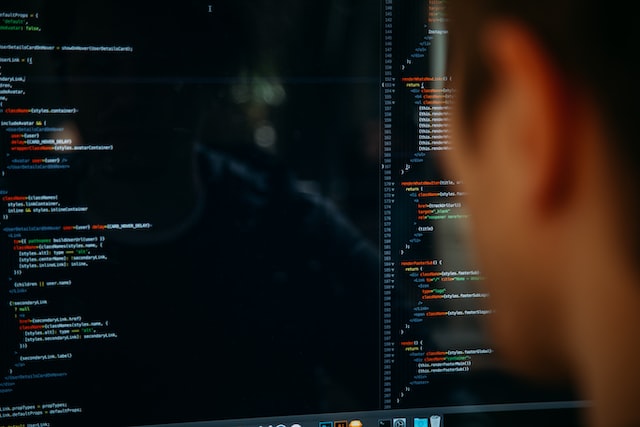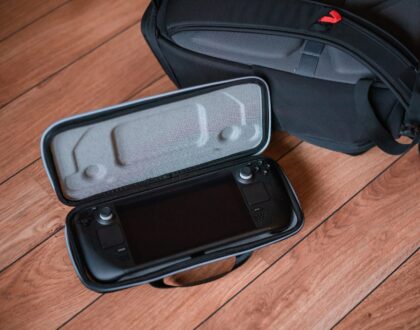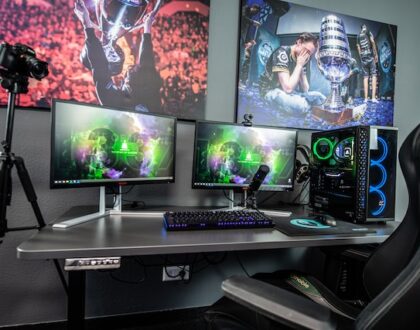Getting Started in Indie Game Development: The Complete Ultimate Guide

Making a game is a daunting task, especially if you’re just getting started. As Robert Davis from GamingProfy said, there are so many people out there who have been doing this for years and know the ins and outs of every process on their way to creating a successful indie studio. But what about those of us who don’t have that kind of background? Where do we start? You’ll find all your answers in The Complete Ultimate Guide to Getting Started in Indie Game Development!
Pick a Small Idea
The first step in getting started in indie game development is to pick a small idea. This can be something as simple as creating a basic platformer or making a clone of an existing popular game. Picking something too ambitious or complex can be overwhelming and may lead to frustration, so it’s best to start small.
Once you have a small idea, it’s time to start planning out the game. This includes figuring out the basic mechanics, level design, and overall structure of the game. It can be helpful to create a prototype or simple playable demo to get a better idea of how the game will work.
The final step is to start coding! This is the most difficult step, but also one of the most rewarding. The more you practice and try out new things, the better you will get at coding. If possible, consider joining a game development team or finding other developers who can help if needed!
Pick an Engine or Framework
There are a variety of game engines and frameworks to choose from when starting out in indie game development. The most popular ones are Unity, Unreal Engine, and GameMaker Studio. These all have their own strengths and weaknesses, so it’s important to do some research before deciding which one is right for you.
If you’re a programmer and you know the basics of C++, then Unreal Engine would be best for you. It’s free to download but there is a royalty fee that goes up depending on how much profit your game makes once it’s been released. However, this engine does have many great beginner tutorials available online if you need help getting started.
Unity is another great choice. It has a free version, but there are also paid versions that give you more features like the ability to export your game directly to consoles and mobile devices. However it does seem like most people who use Unity end up spending money on some of these additional features anyways since they aren’t all necessary for beginners.
If you’re more of a designer, then GameMaker Studio is probably the best choice for you. This software has an incredibly easy to use drag and drop system that allows even beginners to be able to create great looking games without any coding at all. If you do know some code though it also supports GML which is a programming language much like C++.
Non-Programmers
If you’re not a programmer, don’t worry! There are many resources to help you get started in game development without needing to learn how to code. For example, there are various game engines that allow you to create games without any coding knowledge required. Unity and Unreal Engine are two popular choices, and both have a wide variety of tutorials and resources to help you get started.
In addition, there are also various programs that allow you to create games without any coding knowledge. Gamesmith is a popular program that allows you to create simple games using drag-and-drop tools. If you want to create more complex games, however, you will likely need some programming knowledge.
Programmers
If you are a programmer, the first step is to find an engine. There are many popular game engines available, but Unity and Unreal Engine are among the most popular. They both have their own pros and cons, so you will need to decide which one is best for your project.
Once you have chosen an engine, you will need to learn how to use it. This can be done by reading the engine’s documentation, watching video tutorials, or attending workshops/classes.
Once you have a basic understanding of the engine, you will need to start creating your game’s assets. These can include models, textures, sounds, and scripts. You can create these assets yourself, or you can find them online.
Once you have a collection of assets, you will need to start putting them together into a playable game. This can be done by creating your game’s levels, scripting the gameplay, and adding audio and visual effects.
Finally, once your game is complete, you will need to release it to the world. You can do this by submitting it to the app store, posting a link on your website, or hosting a launch party.
2D vs. 3D Games
One of the most common questions asked by new game developers is whether they should focus on making a game with or without using any type of three-dimensional graphics. The answer to this question often depends on what kind of genre you want your game to be in, how much time and money you are willing to spend, and even more importantly which platform you are targeting.
In general, developing a three-dimensional game will require more time and money than creating a two-dimensional game. Additionally, the learning curve for making three-dimensional games is often much higher than for two-dimensional ones. This means that if you are just starting out in game development, it might be a good idea to start with a two-dimensional game. Also, if you are targeting mobile devices such as Android or iOS, it might be better to stick with the traditional format of these platforms and produce a flat, two-dimensional style game.
In contrast, PC gamers have been developing an increasing taste for high quality three dimensional games in recent years which is why many indie game developers are now taking the leap and creating three-dimensional games for this platform.
Create the Prototype
Creating a prototype is the first step in indie game development. The purpose of a prototype is to test out your ideas and see if they are fun and worth developing further. You don’t need to spend a lot of time or money on this – just enough so that you can get an idea of what the game will be like. Oftentimes, you will come up with more ideas for your game as you go along.
Use a paper and pencil to sketch out the gameplay on paper – it is simple and easy, but effective! If you have some kind of programming background or can draw well, this works great too.
If you’re using a programming language, try to do as much of the game creation process in code as possible. This will help prevent bugs and ensure that your product is completed more quickly than if it were done via other methods (e.g., Photoshop or Maya).
Use whatever resources are available to create your prototype. For example, if you are using a programming language, the integrated development environment (IDE) that comes with it might have some built-in functions or code templates for things like “sprites” and other common assets.
Find Assets
One of the best ways to get started in game development is by finding assets online and using them in your games. There are a number of websites where you can find royalty-free graphics, music, sound effects, and more to use in your projects.
Turn it into a Complete Game
If you’re serious about making games and getting into the indie game development industry, one of your goals should be to turn what you learn in this article into a complete game. It’s the best way to test out all that new knowledge and get familiar with putting together an entire project from start to finish–which is something few people do upon entering the indie game development scene. Plus, it’s a great way to make connections and get your name out there.
There are countless ways to go about this, but we’ll suggest a few general tips that should help you on your way:
- First, start by creating a basic design document for your game. This will outline all the important information and give you a convenient reference to go back to if need be.
- Next, start working on your game’s mechanics–the core parts of gameplay that make up the bulk of what players interact with (i.e., how they control their character or navigate levels). You can even try making mockups for these too so you have a better idea of how everything will look in-game.
- Third, start working on the game’s visuals. This can be anything from the textures and models used to create the world, to the way lights are set up and shadows rendered. Again, it’s a good idea to make mockups so you can get an idea of what everything will look like in-game.
- Lastly, start working on the game’s narrative and story elements. This can be anything from dialogue used for cutscenes or tutorial tips to how characters are developed over time–not to mention all the events that will transpire throughout your game world. There are tons of ways you can approach this part too, so feel free to get creative.
- Once you have these basic elements in place, it’s time to start putting everything together. This is where the bulk of your development efforts will go, so be prepared to spend a lot of time on it. However, if you’re patient and take things one step at a time, you’ll eventually end up with a completed game you can be proud of.
“Complete” Looks Different Every Time
No two indie game developers have the same story, just as no two games are ever the same. Maybe you’re a complete newcomer to game development and don’t know where to start. Or maybe you’ve been dabbling in it for a while but want to take your projects up a notch. Regardless of your experience, there are always ways to improve your game development skills and get yourself closer to that finished product.
The Value of Truly Completing a Game
One of the main reasons to start developing your own indie game is because you want to see a project through from beginning to end. This can be an incredibly rewarding experience, but it’s also one that takes a lot of time and effort. It’s important to remember that not every game needs to be completed in order to be successful, but putting in the extra work to see your game through can be incredibly gratifying.
There are a few key things you can do in order to increase your chances of completing your game: set realistic goals, establish a solid development plan, and find a supportive community. Having these things in place will help keep you motivated and on track throughout the entire development process.
If you’re serious about starting your own indie game, then be sure to check out our free guide below! It covers everything from planning and designing your game to marketing and distribution.
Start Something New!
Do you have an idea for a game? You are not alone. It seems like everyone has an idea for the next big thing, but only very few ever get started on it! Don’t let yourself become one of them. The first step is to actually start something new and follow through with your ideas into reality. Luckily there are plenty of ways that you can get started in indie game development.
FAQs
How long does it take to become an indie game developer?
People want to know about the time it takes before you can start developing indie games. The answer is: there’s no specific amount of time, because everyone works at a different pace and has their own unique set of circumstances. I’ve seen some people get started in less than two weeks while others take more than six months just to come up with a solid plan.
It all comes down to how active you are and the amount of effort that you put into it.
The best thing a person can do is keep a consistent schedule for themselves when working on their game development projects. It’s important not to get distracted with other things, because this will make it harder in keeping up your pace over time. The goal is to make this a habit and develop better time management skills.
I recommend starting out with smaller projects first if you’re new to the industry, because it’s much easier to manage at your own pace. I always hear from people that they want their big indie game idea done by next week or even within just a few days after talking about it.
This is not realistic at all when it comes to game development, because no one would be able to do this unless they’re working with a team or have years of experience under their belt. Best thing you can do in the beginning is take things slow and make smaller steps forward every single day.
Is indie game development dying?
No, it’s not. In fact, indie game development is thriving more than ever before. There are more opportunities than ever to make a successful career in indie game development, and the industry is only getting bigger. So if you’re thinking about starting your own indie studio, or just want to create your own games on the side, now is the perfect time to get started.
Is indie game development profitable?
There is no simple answer to this question as it largely depends on the game itself and how well it is selling. However, in general indie games tend to have a smaller player base than mainstream titles, so your profits may be lower. That said, there are many success stories of indie developers making a lot of money off their games, so it is certainly possible.
Conclusion
So there you have it, the complete and ultimate guide to getting started in indie game development. We’ve covered all the steps you need to take from coming up with a great idea to actually launching your game on Steam or other platforms. There’s no doubt that it’s a lot of work, but if you’re passionate about making games, it’s definitely worth it.


